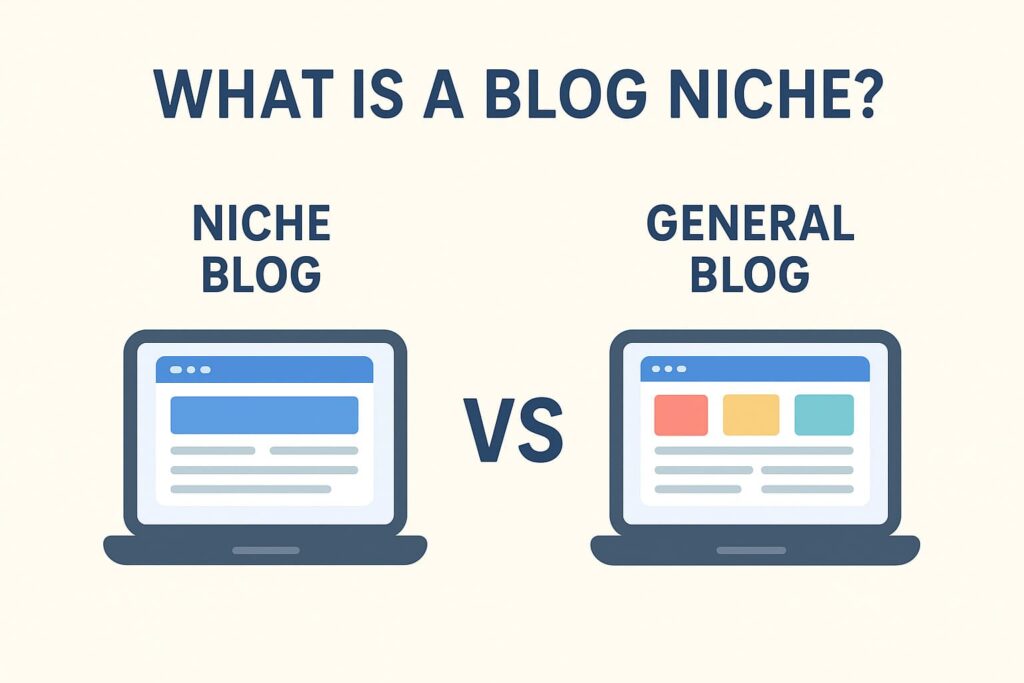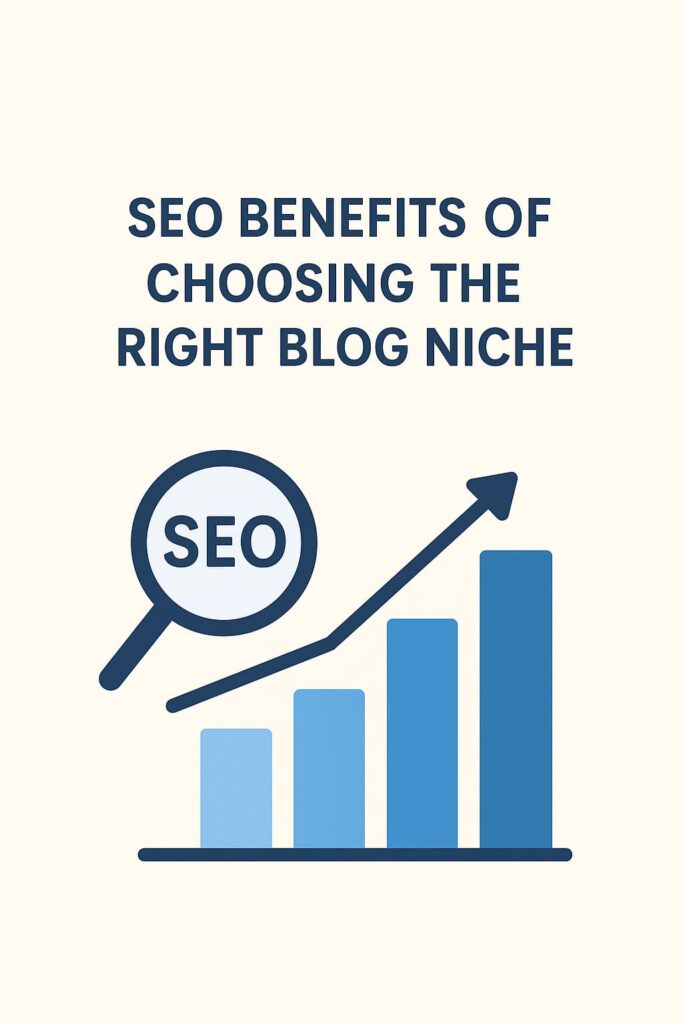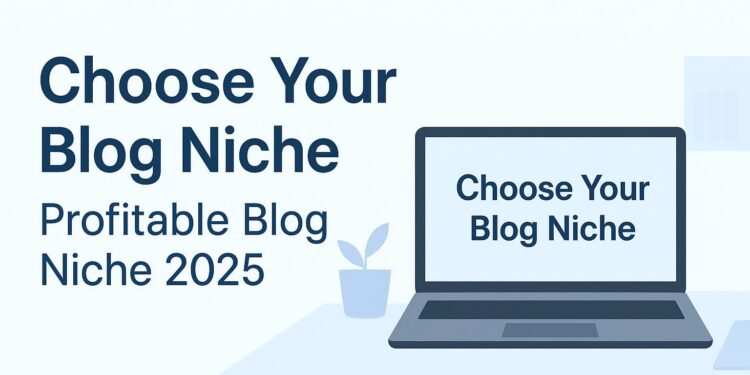Introduction
Starting a blog in 2025 is still one of the best ways to build an online presence, share knowledge, and create multiple income streams. But if you want to make your blog profitable, the first and most important step is choosing the right niche.
Many beginners make the mistake of writing about everything under the sun. While that might feel flexible, it usually leads to poor traffic, low engagement, and little to no earnings. The truth is: niche blogging—focusing on one specific topic—is what allows you to stand out, build authority, and attract a loyal audience.
In this guide, you’ll learn exactly how to choose a blog niche in 2025, step by step. We’ll cover what a niche is, why it matters, how to research, and which niches are the most profitable this year.
What is a Blog Niche?
A blog niche is the specific topic or category your blog focuses on. Instead of being a generalist, you become a specialist in one subject area.
Examples of niches include:
- Personal finance – saving money, budgeting, side hustles
- Health & fitness – workout routines, nutrition, wellness
- Travel – destination guides, travel hacks, lifestyle
- Technology – gadgets, AI tools, software reviews
- Education – online courses, productivity hacks
By focusing on a niche, you can provide consistent, valuable, and in-depth content that appeals to a specific type of reader.

Why Choosing the Right Niche Matters
Your blog niche determines your success, growth, and monetization potential. Pick the wrong niche, and you’ll struggle with burnout, lack of traffic, and low income.
Here’s why the right niche matters:
- SEO benefits – Google favors niche blogs because they build topical authority. A site focused on “personal finance” is more likely to rank than a random lifestyle blog covering finance, pets, and recipes.
- Audience loyalty – Readers trust bloggers who consistently share knowledge in one area. Consistency builds credibility.
- Monetization opportunities – Advertisers and affiliate partners prefer targeted audiences. A blog about “AI productivity tools” is far more appealing to SaaS companies than a broad tech blog.

Step-by-Step: How to Choose a Blog Niche in 2025
1. Start With Your Passion and Knowledge
Blogging is a long-term game. You’ll need to write dozens, even hundreds, of articles. Choosing a niche you enjoy makes the journey sustainable.
Ask yourself:
- What topics do I genuinely enjoy reading or talking about?
- What skills or experiences do I already have?
- Could I write at least 50 articles without running out of ideas?
💡 Example: If you love fitness and have tried multiple diets, you could start a niche blog about plant-based nutrition for busy professionals.
2. Research Market Demand
Even if you’re passionate, you need to confirm that people are searching for your topic. Without demand, your blog will struggle to grow.
Tools to check demand:
- Google Trends – see if interest is rising or falling.
- Google Keyword Planner – measure search volume.
- AnswerThePublic – discover common questions.
💡 Example: Compare “keto diet” (declining interest) vs “plant-based diet” (steady and growing). Pick the one with sustainable demand.
3. Analyze the Competition
Competition is not bad—it proves money exists in the niche. The key is to find gaps you can fill.
Check:
- Top blogs ranking on Google.
- How they monetize (ads, affiliate links, digital products).
- What’s missing? (Do they lack beginner-friendly guides? Videos? Case studies?)
💡 Tip: Use Ahrefs or SEMrush to see competitor keywords.
4. Evaluate Monetization Potential
Not all niches are equally profitable. Some attract high-paying ads and affiliate programs, while others struggle.
Ways to monetize:
- Ad revenue: Niches like finance and tech often have higher RPMs.
- Affiliate marketing: Promote products, tools, or courses relevant to your niche.
- Digital products: Sell ebooks, templates, coaching, or memberships.
💡 Example: A blog about “AI tools for entrepreneurs” can monetize via SaaS affiliate programs, digital product reviews, and premium tutorials.
Profitable Blog Niches in 2025
If you’re still unsure, here are high-potential niches this year:
- Personal Finance & Side Hustles – High ad rates, strong affiliate potential.
- AI & Productivity Tools – Rapidly growing, lots of new products.
- Health & Wellness – Evergreen, consistent demand.
- Education & E-Learning – Rising trend of online courses.
- Travel & Remote Work Lifestyle – Returning strong post-restrictions.

💡 Mini case study: Finance blogs often earn 2–3x higher ad rates compared to travel blogs because advertisers pay more to reach money-focused readers.
Common Mistakes to Avoid When Choosing a Niche
- Going too broad – “Lifestyle blog” is too wide; instead, focus on “minimalist lifestyle for students.”
- Chasing trends only – Avoid short-lived fads like meme coins or viral diets. They may vanish overnight.
- Ignoring your audience – Don’t just write for yourself. Write to solve real problems for readers.
Tips to Validate Your Blog Niche
Before going all-in, test your idea:
- Write 5–10 articles and see if they get traction.
- Join Facebook groups, Reddit, or Quora to check community interest.
- Offer a free resource (ebook, checklist) to measure engagement.
Validation ensures you’re not investing months into a dead niche.
Final Thoughts
The best blog niche lies at the intersection of:
- Passion (you enjoy writing about it),
- Market demand (people are searching for it),
- Profit potential (monetization opportunities).
Don’t rush. Research carefully, brainstorm 3–5 niches, and test before committing.
Blogging in 2025 is still an incredible way to build authority, grow an audience, and create income streams—but it all starts with choosing the right niche.
👉 Take the first step today: Write down three niche ideas, run them through Google Trends and Keyword Planner, and see which one excites you most. That’s your starting point to building a profitable blog.





Thanks admin